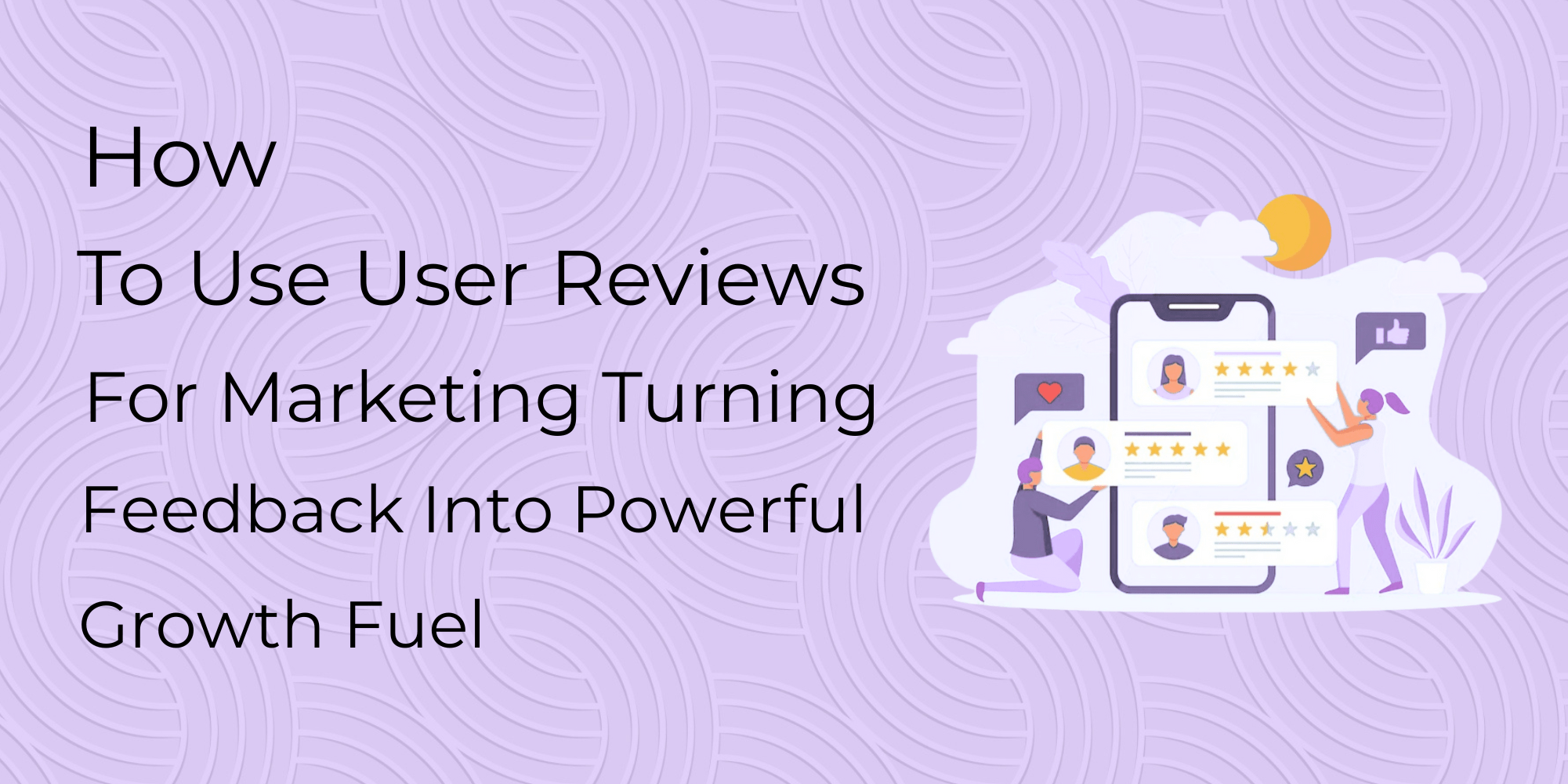In today’s digital marketplace, word-of-mouth has moved online and has become more influential than ever. BrightLocal’s research shows that 88% of consumers trust online reviews as much as personal recommendations. Additionally, 72% won’t take action until they’ve read positive feedback. This means your customers’ voices can be your brand’s most powerful marketing tool if you know how to use them well.
- Why User Reviews Are Marketing Gold
Before discussing tactics, it’s important to understand why reviews are essential in modern marketing.
1.1 Build Trust and Credibility
People trust other people—not ads. When real customers share genuine experiences, potential buyers see that your product or service meets its promises. This social proof lowers perceived risk and builds confidence. Whether you sell software or skincare, authenticity converts better than claims.
1.2 Boost SEO and Visibility
User-generated content (UGC), including reviews, improves your search engine optimisation (SEO). Reviews provide:
- Fresh, keyword-rich content that Google appreciates.
- Higher click-through rates for listings with star ratings.
- Better local SEO, since platforms like Google Business Profile rank businesses with more and better reviews higher.
1.3 Influence Purchase Decisions
A glowing review can help hesitant customers make a purchase. Even neutral or slightly negative reviews are beneficial, as they make the feedback feel more authentic. In short, user reviews don’t just reflect your brand—they actively influence your conversions.
- Collecting Reviews the Right Way
Before you can market with reviews, you need to gather high-quality feedback. The key is to make the process easy, ethical, and ongoing.
2.1 Ask at the Right Time
Timing is everything.
- For e-commerce, ask a few days after delivery, giving customers time to try the product.
- For services, follow up right after project completion or customer success milestones.
- For SaaS products, prompt users after they achieve a specific result (“You’ve completed your first project—how was your- experience?”).
2.2 Simplify the Process
Eliminate barriers by:
- Sending direct review links via email or SMS.
- Embedding review widgets on your site.
- Offering a one-click option to rate and comment.
2.3 Encourage Honest Feedback (Without Incentives)
Never buy or fake reviews—it’s wrong and can backfire. Instead, ask genuinely:
“Your feedback helps us improve and helps others make confident decisions. Would you share your experience?”
You can thank reviewers publicly or offer general loyalty rewards that don’t depend on the review content.
2.4 Use Multiple Platforms
Don’t store all your reviews in one place. Collect them on:
- Google Business Profile
- Yelp
- Trustpilot
- G2 (for software)
- Amazon (for products)
- Social media comments or video testimonials
The more platforms you’re active on, the broader your reach and trust.
- Turning Reviews Into Marketing Assets
After gathering feedback, the next step is to repurpose it throughout your marketing efforts.
3.1 Add Reviews to Your Website
Your website is an excellent place to showcase social proof.
Where to display
reviews:
- Homepage (“See why our customers love us”)
- Product or service pages
- Checkout pages to reduce last-minute hesitation
- A dedicated testimonials or “Success Stories” page
Pro tip: Use a rotating carousel or snippets with photos of real customers for authenticity.
3.2 Leverage Reviews in Email Marketing
Your email list already contains interested prospects and loyal customers—reviews can reinforce their confidence.
Try these strategies:
- Welcome emails: “See why 10,000 users love our app.”
- Abandoned cart reminders: “Still considering it? Here’s what other shoppers say.”
- Post-purchase follow-ups: Highlight positive experiences to build advocacy.
Personalized emails with real quotes work better than generic “Buy Now” messages.
3.3 Use Reviews in Social Media Campaigns
Social media is where people naturally discuss brands—turn that into marketing fuel.
Share review highlights as graphics or short videos. For example:
“I can’t believe how easy it was to use this! Saved me hours.” — @happycustomer
You can also spotlight a “Customer of the Month” or share before-and-after stories for more impact.
Platforms like Instagram and TikTok appreciate authenticity, so user-generated video reviews or unboxing clips can often outperform polished ads.
- Integrating Reviews Into Paid Advertising
If you’re advertising on Google or Meta, user reviews can boost performance significantly.
4.1 Add Star Ratings to Google Ads
You can use seller ratings extensions in Google Ads, showing stars and review counts in your ad. This visual trust signal can improve click-through rates by up to 35%, according to Google.
4.2 Use Testimonials in Display and Video Ads
Short, impactful quotes from real customers can outperform traditional ad copy.
Example:
“Switched from [Competitor] and never looked back!” — Jane, Verified User
Combine this with a smiling customer image or a testimonial video to humanise your campaign.
4.3 Feature Real Reviews in Retargeting Ads
When retargeting visitors who didn’t convert, show them what others are saying.
“Thousands of users trust us” plus authentic reviews equal reduced hesitation and increased conversions.
- Boosting SEO With Review Content
Search engines love authentic, user-generated content. Here’s how reviews improve your organic visibility:
5.1 Structured Data Markup
Add schema markup (review and aggregateRating) to your website so Google can show star ratings in search results. This boosts CTR and signals credibility.
5.2 Long-Tail Keywords
Customer reviews often contain natural, long-tail keywords that match real search queries. For example, if someone writes:
“The best noise-cancelling headphones for flights”,
You’re automatically targeting that keyword organically.
5.3 Fresh Content Signals
Regular new reviews show search engines that your business is active and relevant, helping your pages rank well.
- Managing Negative Reviews (and Turning Them Into Positives)
No business gets only five-star reviews—and that’s fine. How you handle negative feedback can build more trust than ignoring it.
6.1 Respond Quickly and Professionally
Address complaints with empathy and solutions, not defensively.
Example:
“We’re sorry your experience wasn’t ideal, [Name]. We’d love to make it right—please DM or email us at [[email protected]].”
Showing you care turns criticism into credibility.
6.2 Learn From Constructive Feedback
Negative reviews often point out gaps in your product or service. Treat them as free market research.
If several customers mention the same issue, it’s time to fix it—and then follow up with an update (“We listened and improved!”).
6.3 Balance Out the Negativity
Encourage more satisfied customers to leave feedback. A larger volume of authentic, positive reviews dilutes the impact of occasional bad ones.
- Encouraging Ongoing Review Generation
Don’t let your review strategy be a one-time effort. Create a sustainable system that keeps reviews coming in consistently.
7.1 Automate the Ask
Use automation tools like:
- Klaviyo, Mailchimp, or HubSpot (for email)
- Yotpo or Trustpilot integrations (for e-commerce)
- Zapier workflows that trigger review requests after purchases or milestones
Automation helps you never miss chances to collect fresh feedback.
7.2 Reward Engagement (Not Opinions)
Host community contests like:
“Share your favourite photo using our product and tag us for a chance to win!”
This encourages organic user-generated content without incentivising fake reviews.
7.3 Create a Feedback Loop
Keep customers informed that their reviews make a difference:
“Thanks to your feedback, we just added new size options!”
When people see their input matters, they’re more likely to keep sharing.
- Measuring the Impact of Reviews on Marketing
As with any marketing effort, you need to track performance metrics to see what’s effective.
Key Metrics to Monitor:
- Conversion rate increase after adding reviews
- Click-through rates for ads featuring testimonials
- Average star rating and growth in review volume
- Sentiment analysis of reviews over time
- Traffic and rankings from review-related keywords
Use tools like Google Analytics, ReviewTrackers, or Sprout Social to monitor results and adjust your approach.
- Real-World Example: How Brands Win With Reviews
Consider how Airbnb uses reviews. Each property listing includes guest feedback, star ratings, and host replies. This builds trust—so much that travellers often book homes without seeing them first. Similarly, Amazon’s review system drives billions in sales. The platform highlights “Verified Purchase” badges to maintain credibility. These examples show that reviews are not just feedback—they are a marketing engine driving conversions.
Final Thoughts: Build a Marketing Strategy Powered by Your Customers
User reviews are more than just nice-to-have testimonials—they are the heart of modern marketing. They tell your story through the voices that matter most: your customers. When used correctly, they can:
- Build strong trust
- Improve your SEO
- Enhance your ad performance
- Create a feedback loop that drives growth
So, start collecting, curating, and celebrating those voices. When your customers speak for you, your marketing becomes more powerful than ever.


